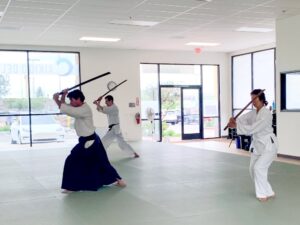Tips for Preseason Bow Hunting: Strategies for Knocking Down That Early Season Buck

Bow hunting season in several states begins in August and continues through the rest of the year. Early season bow hunting has been some of the most profitable and pleasant times of the early summer, autumn, and early winter. We’ll go over some early-season bow hunting tips below.
- Early season bow hunting for whitetail, mule deer, blackmail, or elk gives you a strong benefit over other seasons year-round.
- You are the first hunting force these animals will encounter this year.
- You’ll get the entire summer to explore and design the animals.
- Furthermore, you will only be fighting with other early season bow hunters, so there will be no long-range competition.
- Many people connect bow hunting with cold autumn days and avoid the early part of the season, resulting in fewer competitors overall.
Scouting:
One of the primary advantages of bowhunting early in the season is that you’ll have enough time to identify the bucks, which should continue throughout September. If you can determine where and when they go regularly, you can catch them by erecting a position, either one tree stand or a ground blind, and afterwards waiting for them to pass by.
There are various solid ways to scout for early season bow hunting.
Mornings and afternoons excursions to a place where you can watch deer spots without upsetting them are fantastic ways to see what is on your early season bow hunting region. They will provide you with valuable suggestions and hints about when and where the deer are travelling and the paths they are using to get there.
Trail cams are a useful tool for predicting what type of animals will be present during your early bow hunting season and advising you on where to put up the stand.
Scouting is required if you intend to go on an identify and stalk deer hunt because you need to know where the big bucks are hanging out. One early season bow hunting tip to identify and stalk hunters is to locate many shooter bucks, as it may take several blown stalks until you are fortunate. The effectiveness rate is roughly one-sixth of the time.
Bucks are less sleepy and more aggressive throughout the summertime and early bow hunting season. A shrewd buck who only wanders at night throughout the fall would usually stay out in sunlight for the first hour or two of the day and return an hour before dark. This will aid your scouting attempts and should instil some early-season bow hunting trust in you.
Bucks for Patterning
During the summer, deer and elk are mostly concerned with food. They are not concerned about male superiority or breeding. This implies that deer have established routes to or from their bedding, eating, and watering places. All regions are extremely relevant and can be used to achieve results while bow shooting in the early part of the season.
A platform can be set up to capitalize on these three target regions. While setting the stand immediately at the water or feeding location can be highly efficient, one early season bow hunting advice is to place the stand on the main road to and from the laying area rather than the bedding area itself.
Hunting for Spots and Stalks
Spot and chase is another approach that can be quite productive for early season bow hunting. This is a popular strategy for mule deer, but it can also be employed successfully on deer hunting and elk.
If the wind gets to whirl, and you are afraid of getting tired, you may need to persuade the deer onto his feet. You can do this by making grunting noises, and if there is a rock nearby, you can hurl it to divert the deer’s attention away from your own.
Another ideal situation for early season bow hunting, particularly deer and elk, is when a buck sleeps in the shade behind a cliff. In this situation, you can slip over the top of the buck without them knowing you’re there. Likewise, it is better to be patient enough to wait for them all to rise on their own, but if the case calls for it, the act of aggression may be done.
An early season bow hunting tip for identifying and stalk hunting is waiting until the conditions are favourable before stocking. This usually entails waiting is for the wind to gather and become constant or changing direction entirely. Wind gusts do nothing to muffle noise and often blow in various directions.
Control of Scent:
The warm temperatures are one advantage of bow hunting in the early season. The disadvantage is that it can get heated. Also, when temperatures are average, it is quite simple to sweat inside the early season, and sweat smells worse to a deer or elk’s nose.
There are techniques to reduce your scent in even hot weather, which leads us to early season bow hunting advice. Bow hunting entails getting near to your prey while remaining inconspicuous. Because you cannot stop your body from perspiring, wearing scent-resistant clothing is incredibly advantageous. Due to the general nature of the clothes, most odour avoidance apparel is extremely warm. Fortunately, there is some scent protection gear for warmer months for us early season bow hunters.








